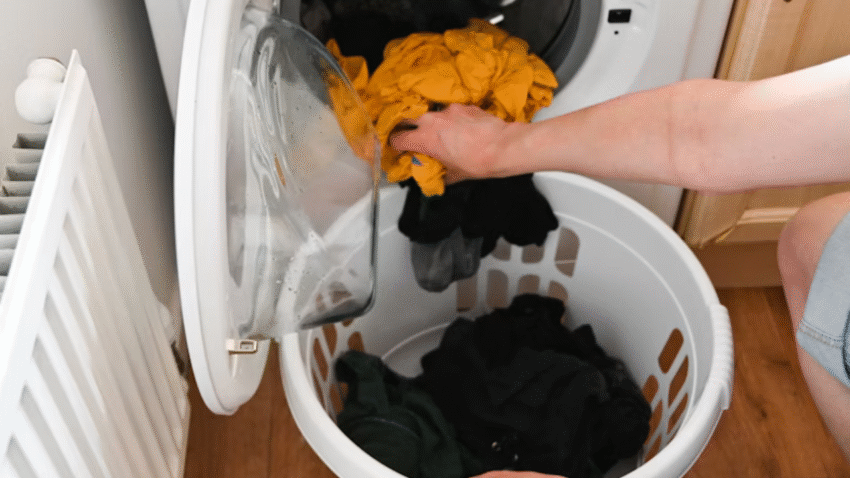Introduction
If your front load washer has started to smell musty or leave clothes less than fresh, it’s time for a deep clean. Front loaders are notorious for trapping moisture, detergent residue, and lint, which can lead to mold, mildew, and unpleasant odors. The good news is, you can tackle the problem without harsh chemicals. This guide will show you how to clean a front load washer naturally using safe, eco-friendly ingredients that are effective, inexpensive, and already in most homes.
Why Cleaning Your Front Load Washer Matters
Front load washers are designed to be energy- and water-efficient, but their airtight seals and rubber gaskets can trap water and residue. Over time, this creates a breeding ground for mold and bacteria.
Benefits of regular, natural cleaning include:
- Odor Prevention: Eliminates musty smells caused by trapped moisture.
- Better Wash Results: Cleaner drum and hoses mean fresher clothes.
- Longer Machine Life: Prevents buildup that can damage internal parts.
- Eco-Friendly: Natural cleaners are safe for your family, pets, and the environment.
- Cost Savings: Avoid expensive repair bills caused by neglect.
By making washer cleaning part of your regular laundry routine, you keep your machine in top condition and your laundry smelling fresh.
Step-by-Step Guide to Cleaning a Front Load Washer Naturally
1. Gather Your Natural Cleaning Supplies
You’ll need:
- White vinegar (kills mold and removes odors)
- Baking soda (scrubs and neutralizes odors)
- Microfiber cloth or sponge
- Old toothbrush (for crevices)
- Spray bottle (optional)
2. Clean the Door Seal and Gasket
The rubber gasket around the door is a hotspot for mold, lint, and trapped detergent.
How to clean it:
- Open the washer door and gently pull back the rubber seal.
- Spray or wipe the gasket with a 50/50 mixture of vinegar and water.
- Use an old toothbrush to scrub away mold, mildew, and residue.
- Wipe dry with a clean microfiber cloth.
Tip: Always check for small items (coins, hair ties, socks) trapped in the seal.
3. Clean the Detergent Dispenser
Detergent drawers can become coated with residue, especially if you use liquid fabric softener.
How to clean it:
- Remove the detergent drawer completely (check your manual if unsure how).
- Soak in warm water mixed with a cup of vinegar for 15–20 minutes.
- Use a toothbrush to scrub off buildup.
- Rinse and dry before reinserting.
4. Run a Vinegar Cleaning Cycle
This step cleans the drum and internal parts naturally.
How to do it:
- Pour 2 cups of white vinegar directly into the drum (not the detergent drawer).
- Set the washer to the hottest, longest cycle available.
- Let the machine run completely to dissolve soap scum and kill bacteria.
Why it works: Vinegar breaks down detergent residue, dissolves mineral deposits, and deodorizes.
5. Run a Baking Soda Rinse Cycle
Baking soda is a gentle abrasive that helps scrub away remaining buildup and neutralize any lingering odors.
How to do it:
- Add ½ cup of baking soda directly into the drum.
- Run a short hot-water cycle.
- Leave the door open after the cycle to let the interior dry completely.
6. Clean the Filter and Drain Pump
Many front load washers have a small filter or trap that catches lint, coins, and debris. If clogged, it can cause odors and drainage problems.
How to clean it:
- Locate the filter (usually at the bottom front of the washer behind a small door).
- Place a towel and shallow pan under the filter to catch water.
- Unscrew or open the filter and remove debris.
- Rinse the filter under warm water and replace it securely.
7. Wipe Down the Exterior
Use a cloth dipped in vinegar-water solution to clean the outside of the washer, including control panels, knobs, and handles.
Common Mistakes to Avoid
- Using Too Much Detergent
- Mistake: Excess soap causes buildup in the drum and hoses.
- Solution: Follow manufacturer guidelines and measure detergent carefully.
- Leaving the Door Closed After Use
- Mistake: Traps moisture inside, encouraging mold growth.
- Solution: Leave the washer door open to allow airflow.
- Ignoring the Gasket
- Mistake: Skipping gasket cleaning leads to mold and foul smells.
- Solution: Wipe the gasket dry after each use and deep clean regularly.
- Skipping Regular Maintenance
- Mistake: Waiting until the machine smells bad to clean it.
- Solution: Do a natural cleaning cycle once a month.
- Using Harsh Chemicals
- Mistake: Bleach and chemical cleaners can damage seals and are harmful to the environment.
- Solution: Use vinegar and baking soda for safe, effective cleaning.
Extra Laundry Tips & Hacks
- Add a Monthly Reminder: Set a calendar alert to clean your washer every 4 weeks.
- Use HE (High-Efficiency) Detergent: Designed for front loaders, it reduces soap residue.
- Dry the Gasket After Every Load: Keeps moisture from lingering.
For more eco-friendly laundry ideas, check out our “How to Organize a Small Laundry Room on a Budget” guide.
Conclusion
Knowing how to clean a front load washer naturally is essential for keeping your laundry fresh and your machine running efficiently. With just vinegar, baking soda, and a few simple tools, you can tackle mold, odors, and buildup—without resorting to harsh chemicals.
Pro Tip: Prevention is key. A quick wipe-down after each load and a monthly deep clean will keep your washer smelling fresh and performing at its best.
Bookmark this guide so you’ll always have an easy, natural cleaning routine at your fingertips.
